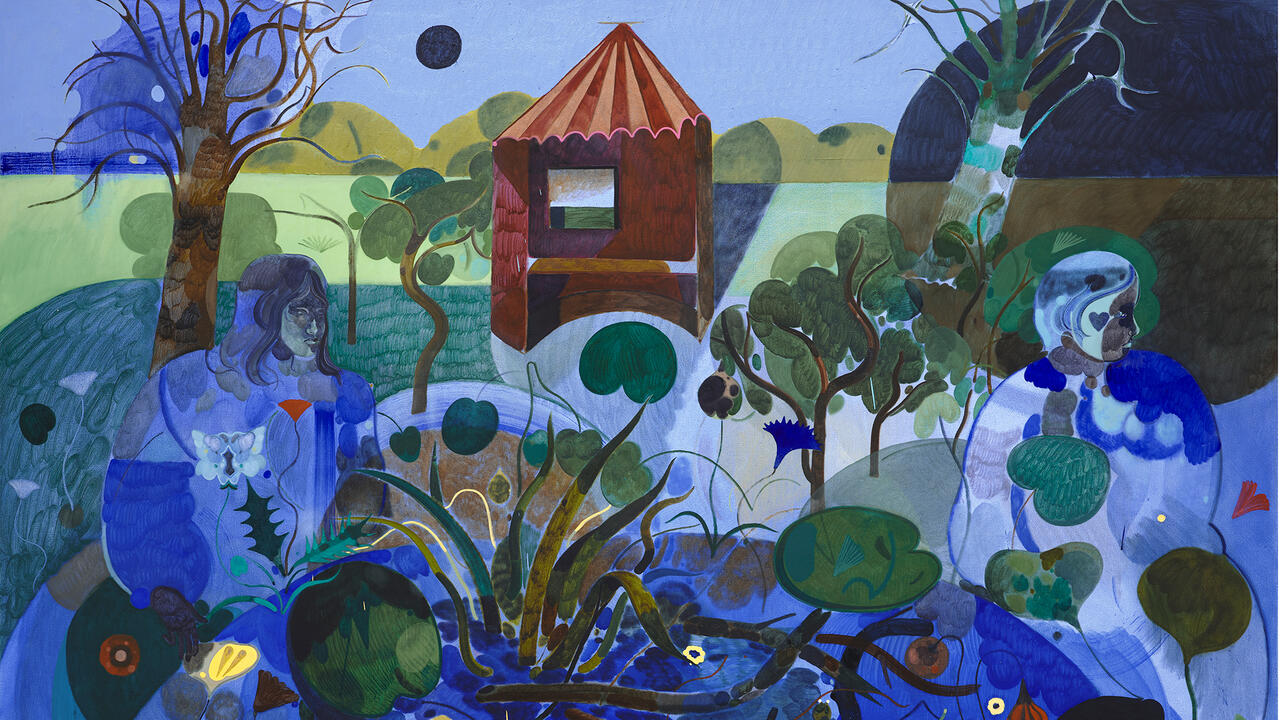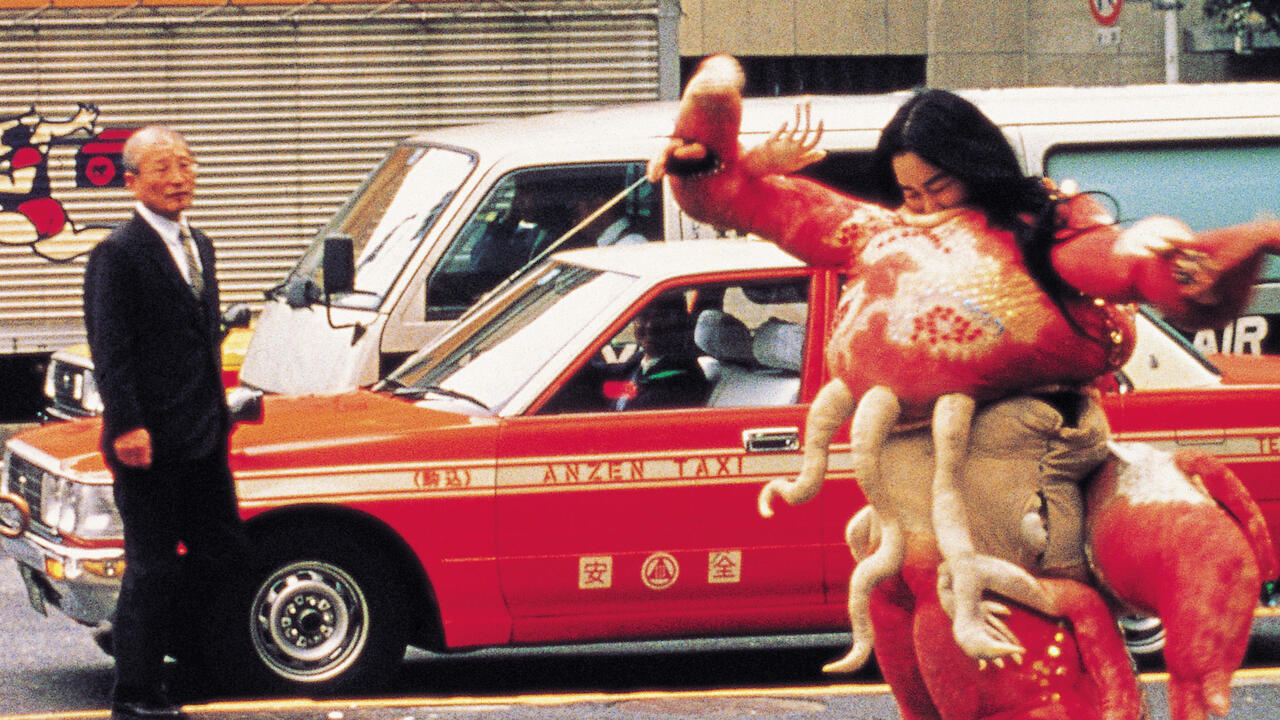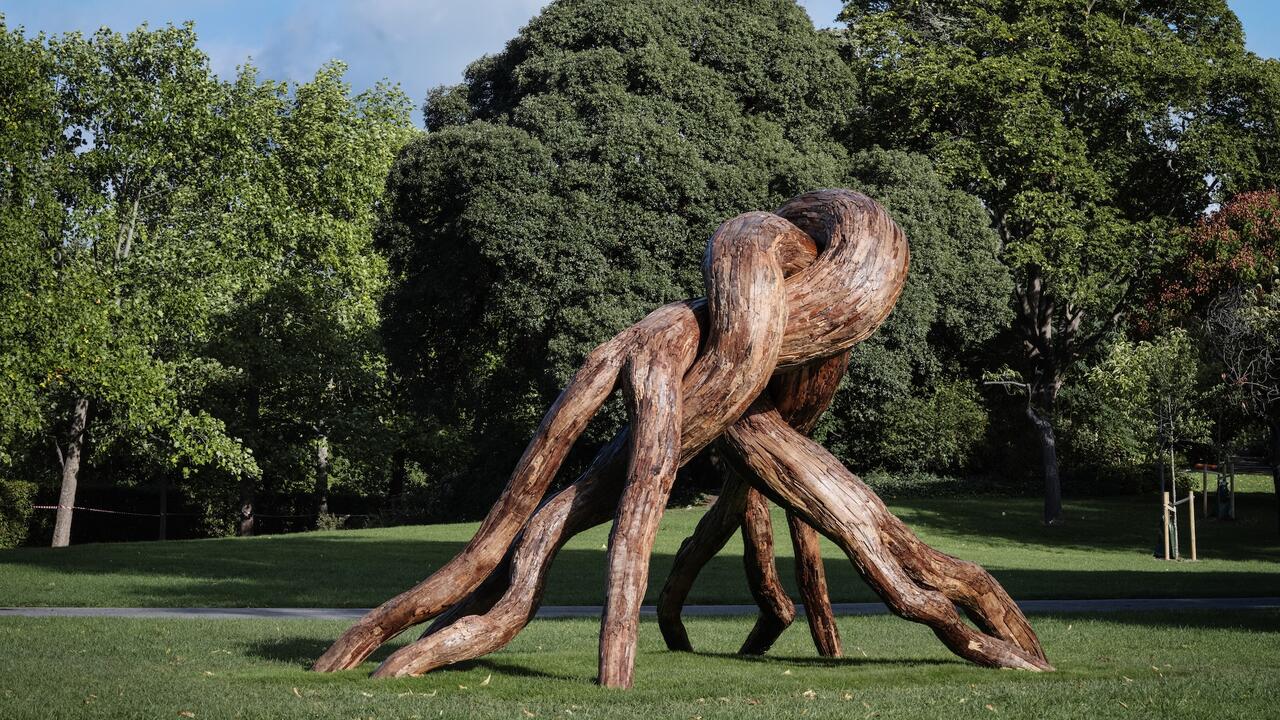John Akomfrah
Arnolfini, Bristol & Lisson Gallery, London, UK
Arnolfini, Bristol & Lisson Gallery, London, UK

After the Portuguese caravels, the slave ships, sharks and bodies in the water, ‘the men with eyes as heavy as anchors’ arrive in Derek Walcott’s poem ‘The Sea Is History’ (1980). Within a line and without record, the men are buried under the sea, in ‘that grey vault’ where the West’s memory of its own vast cruelties is lost to the amnesic tides. For John Akomfrah, such histories are held just under the surface of the waves, in the global subconscious. An archivist of the ‘grey vault’, Akomfrah sees in the sea the same turbulence and drifts of identity that he finds in the found footage he uses in his films.
Akomfrah uses the phrase ‘image taking’ to describe the migration of materials from their contexts to his multi-channel video installations, where coincidences and complicities between these ‘taken’ images and original footage are brought together to transformative effect. In his acclaimed three-channel video installation Vertigo Sea (2015), first shown as part of Okwui Enwezor’s ‘All the World’s Futures’ at the 2015 Venice Biennale and now receiving its UK premier at Arnolfini in Bristol, this process results in an immersive wash. New footage from northern Norway, Skye and the Faroe Islands is cut with archival material from sources as diverse as the BBC Natural History Unit and an audio recording of one of the 27 refugees who survived in the Mediterranean for two days by clinging to a tuna net in 2007. Speaking at Arnolfini in January, Akomfrah described the process of immersion, whether in the sea or in a narrative, as a transformation: it is always a different person, he suggested, who is lifted from the water.
In Vertigo Sea, this change takes place both slowly and all at once. Across the three screens, Akomfrah sets up moments of association and recall, the sideways crab-scuttle of memory that sees seaweed turn into eels into the twisted hair of a young girl into the rope binding the hands of bodies on the beach; a bait ball gives way to the 1946 H-bomb tests on Bikini Atoll; a fish on the forest floor rots in rapid time-lapse while waves heave in slow motion and, on the seabed, pillow lava conjures new rock formations from the water in seconds. Throughout, a clock ticks.
A series of intertitles punctuates the stream, relocating sections of the work to divergent times and sites. One situates us in Spitsbergen in the Svalbard archipelago where, just before a grainy polar bear is shot, ‘the men with eyes heavy as anchors’ arrive: Walcott’s line appears onscreen, unattributed. In conversation with the academic and writer Anthony Downey at Arnolfini, Akomfrah described the process of working with multi-channel video as a dialogue conducted with ‘non-verbal cues’. Yet the piece is loud with language, from the literary canon to reportage and interview, contributing most affectingly to what Akomfrah calls his ‘tapestry of empathy’.
It is significant that Vertigo Sea is on show in Bristol, a city that directly profited from the slave trade for almost a century. Also included in the exhibition is Tropikos (2016), a new, single-channel, 36-minute video filmed in Plymouth and the Tamar Valley. These are both sites connected to the early expansion of the British Empire and the first British expeditions to Guinea, West Africa, in the 16th century. A series of arresting tableaux vivants shows figures in Elizabethan dress looking out to leisure cruisers and container ships in Plymouth Harbour, though an intertitle locates the action on the Guinea coast. Elsewhere, the actors pluck at unlikely gourds and fruit dangling from a tree, suspended by very visible strings. Throughout the piece, a man’s voice repeatedly cries, ‘Oh hell! What do mine eyes with grief behold [?]’, transposed from Milton’s Paradise Lost (1667) where the line is spoken by the Devil, improbably disguised as a cormorant, hiding in the top branches of the Tree of Life. (Appropriately, the cormorant is a historical symbol of greed.)

Posed as a sumptuous costume drama, Tropikos is heavy with literary reference and announces itself as a fiction – a ‘tetralogy on water and dreams’ – with the opening titles citing Shakespeare’s The Tempest (1610) and Life is a Dream (1635) by Pedro Calderón de la Barca. Yet the work’s playful anachronisms suggest this is a narrative that is, at once, historical and vital: a portrait of the living ghosts haunting the contemporary landscape.
Tropikos contains no archival footage; nor do The Airport and Auto Da Fé (both 2016), the two new and ambitious works showing alongside it at London’s Lisson Gallery. This is the artist’s first solo show with the gallery and comprises entirely new works, shown across two floors of its 27 Bell Street location. Here, the soundtracks of all three films swill together in a central space, where five striking c-type editions of stills from The Airport and Auto Da Fé are hanging. The transition between this bright atrium and each darkened room off it is a moment of submersion in darkness and sound.
The Airport is a 52-minute, three-channel video filmed among the architectural ruins of a former airport in southern Greece. Its cast of characters from different eras is suspended, using multiple screens and long takes, in a space of endlessly deferred departure. A spaceman and a man in an ape suit recall Stanley Kubrick’s 2001: A Space Odyssey (1968) – their presence on the airport runway or standing among the other characters (who seem not to notice them) stretches the work’s elastic time towards unsettling absurdity. In the collapsed world of The Airport, separate generations endlessly move across one another, sometimes meeting, sometimes missing one another entirely. At moments, a soundtrack of dripping droplets overlays the travellers’ echoing footsteps across the flooded floor of the departure, becoming almost indistinguishable from them.
In Auto Da Fé, shot in Barbados, relentless waves of departure from 1654 to 2015 see the arrival of Sephardic Jews from Brazil, Huguenots from Brittany, Christians from Mosul. Each new group appears and disappears, pausing to raise their upturned palms in prayer (Auto Da Fé translates as ‘Act of Faith’) or their fists in a sequence of black power salutes. As each group replaces the last, the piece seems to follow a timeline of repetitive forgetting, but in the landscape, something like a memory remains. Auto Da Fé is the only two-channel work included in this pair of exhibitions and is installed with the two screens tilted to face one another, emphasizing dialogue or, perhaps, ricochet. The work opens with a child’s stuffed toy riding the crest of a wave on the left screen, while the right shows gravestones in the Jewish cemetery in Bridgetown. Later, a drained swimming pool stands across from the incessantly crashing waves. Throughout, photographs of refugees wash onto the beach, distorted and then increasingly disintegrated by the water. The piece ends, distressingly, with a doll, stripped and prone in the wet sand, as though a substitute for the body of the child that we all know must follow.























